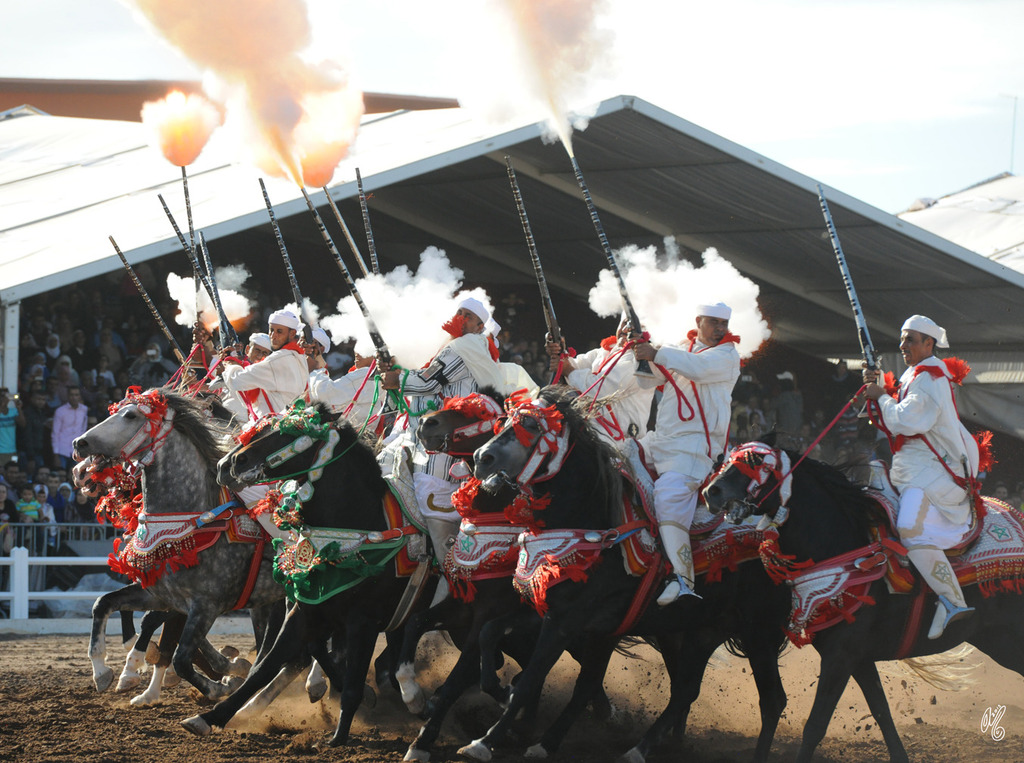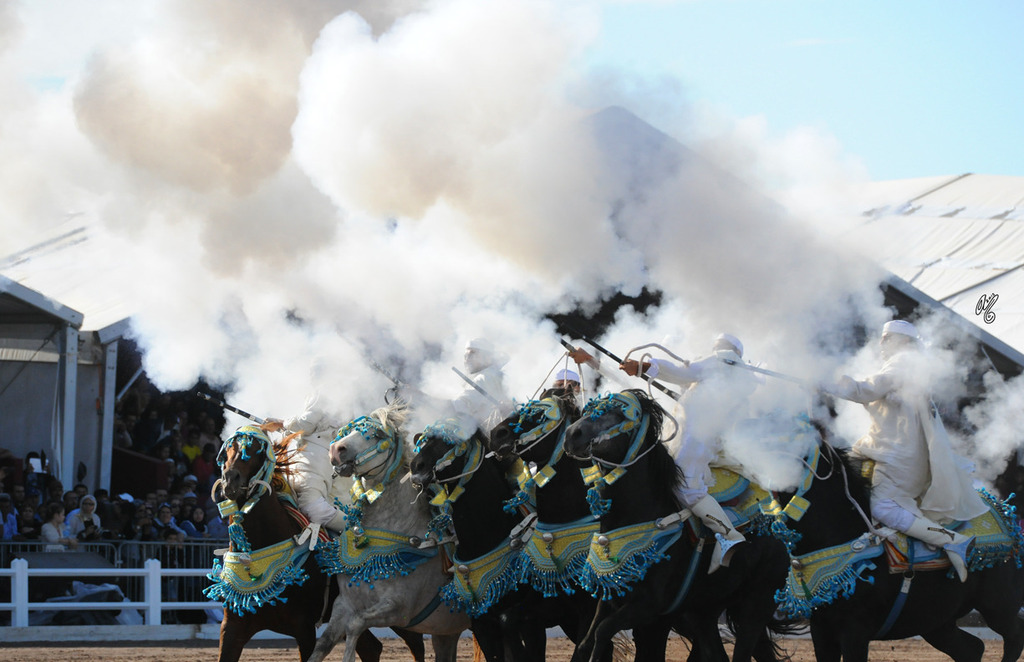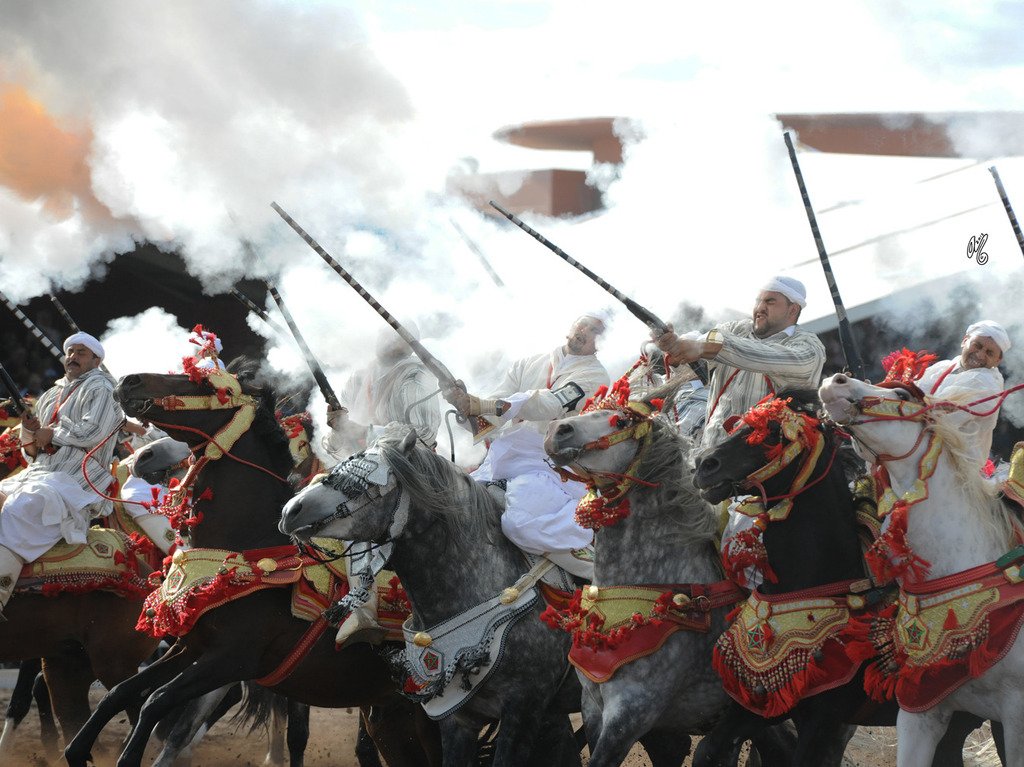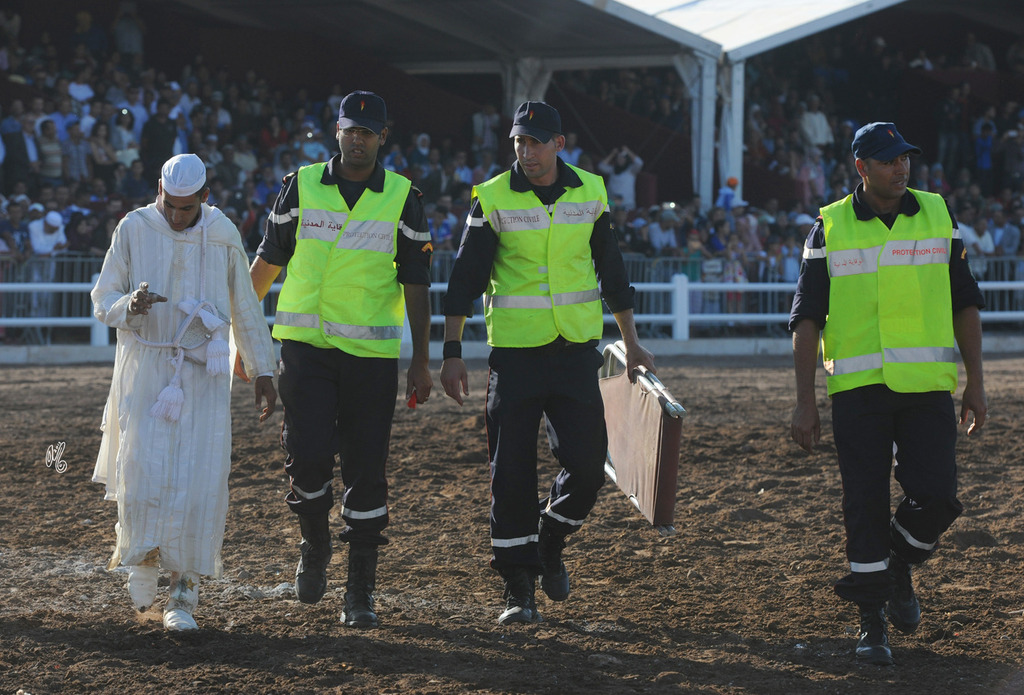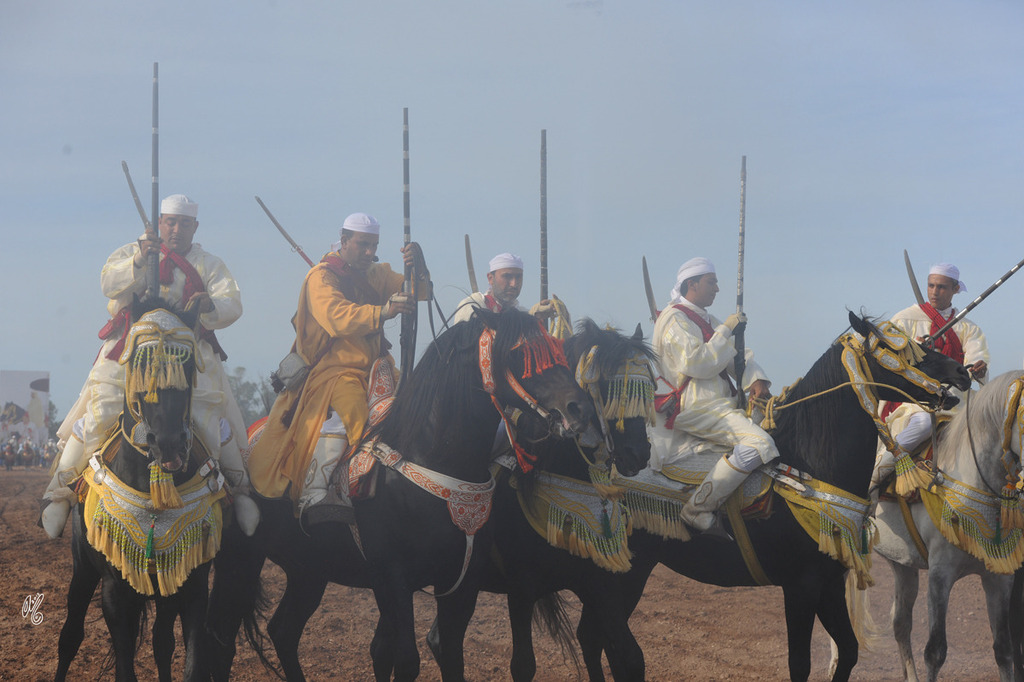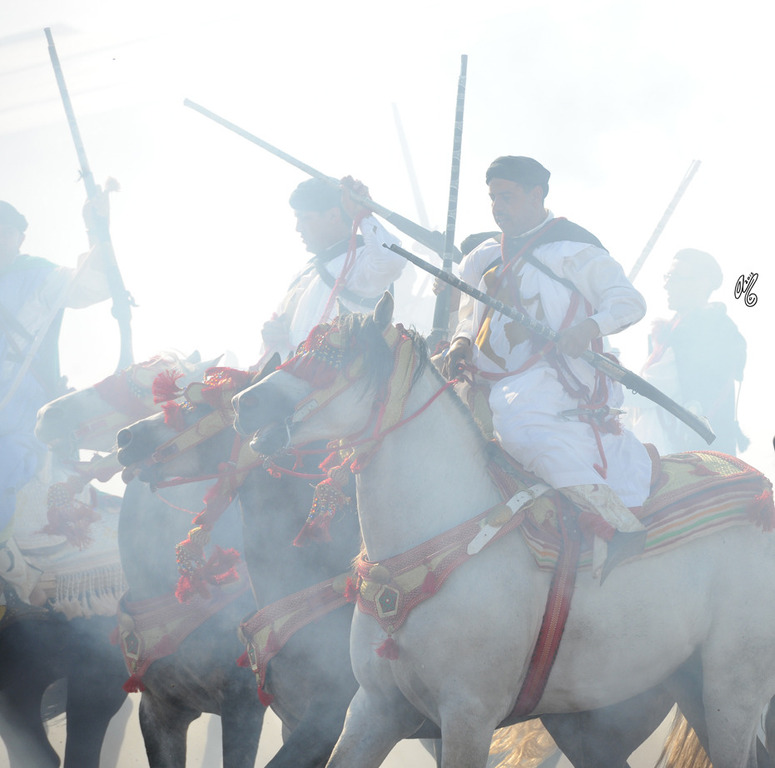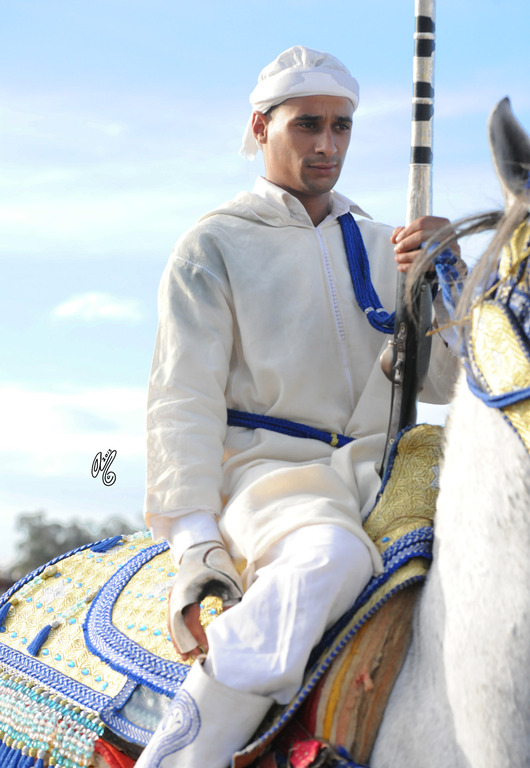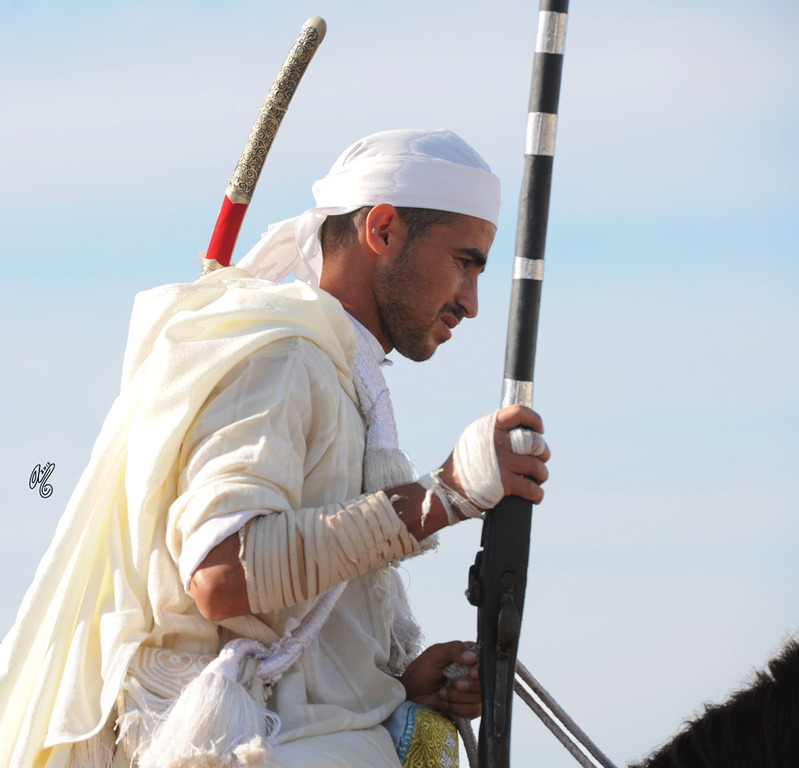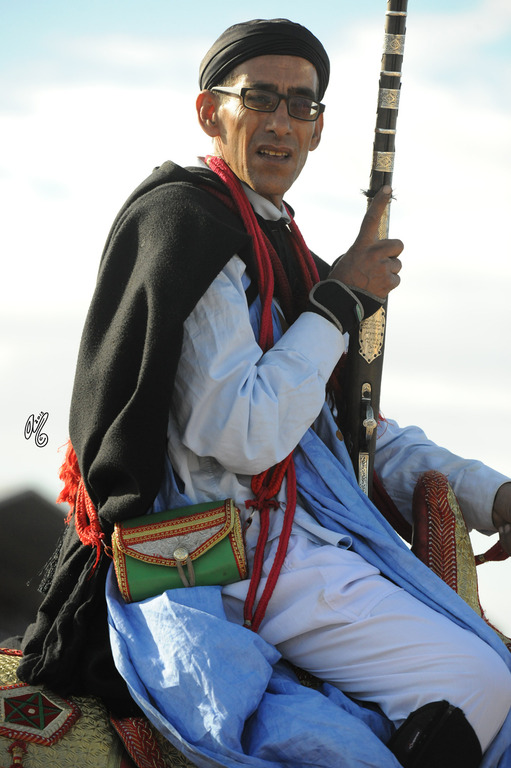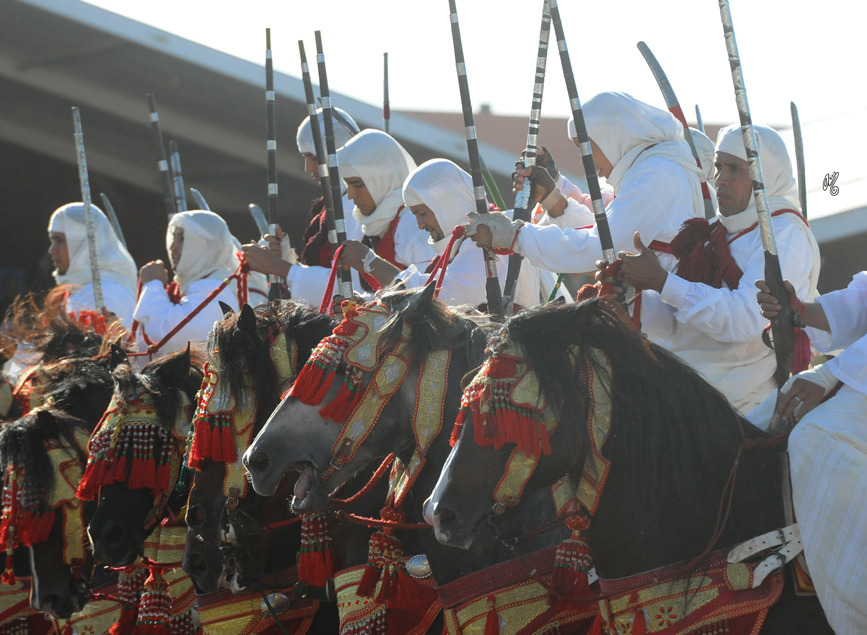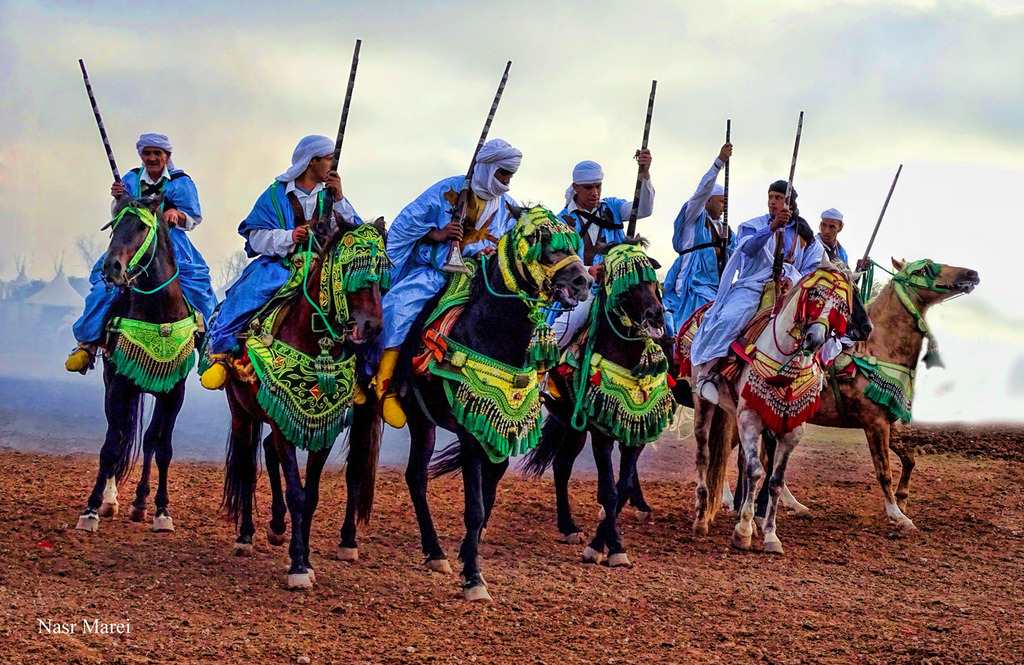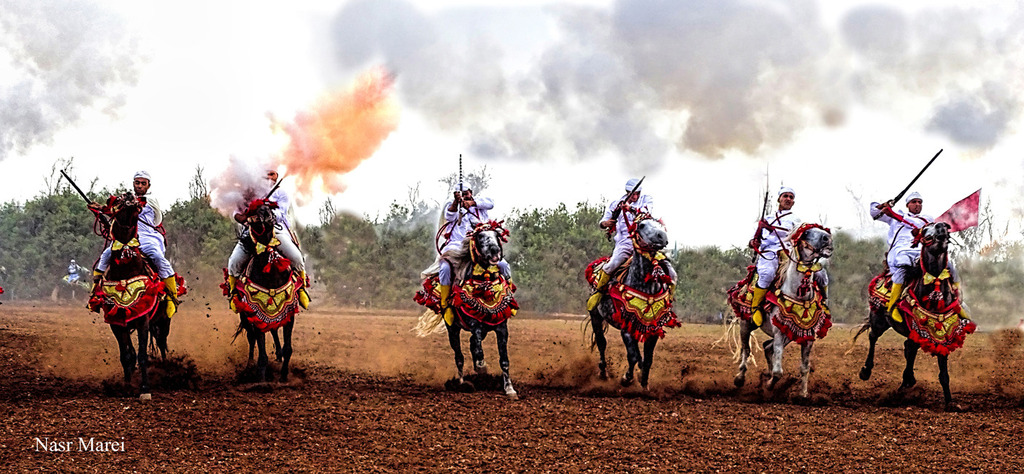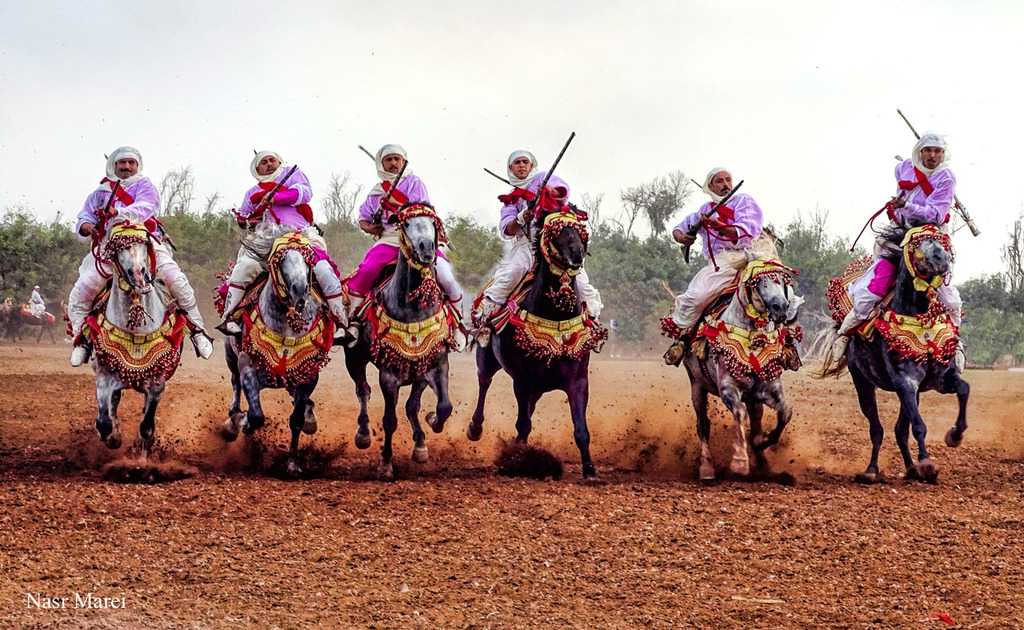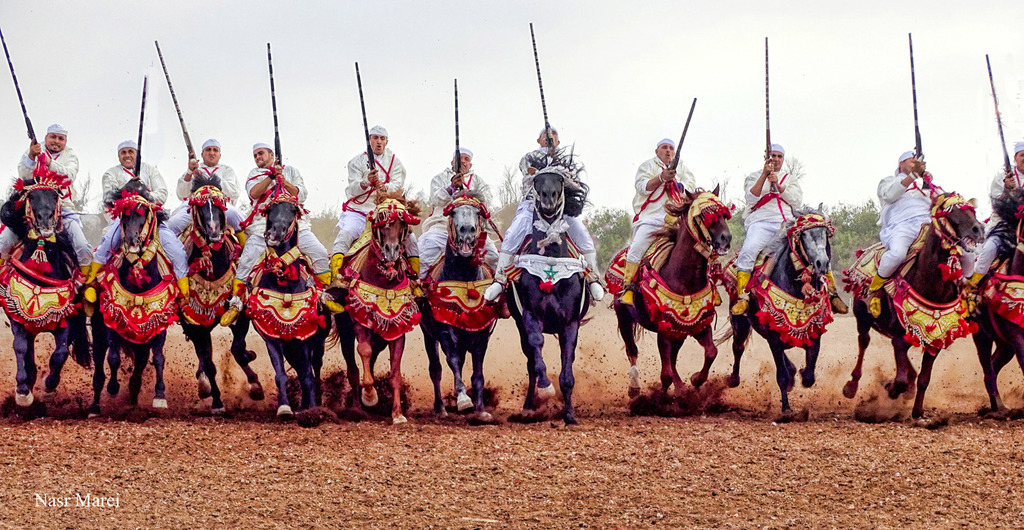The 2015 Salon Du Cheval D’ El Jadida: Tbourida
The 2015 Salon Du Cheval D’ El Jadida: Part three of three
Tbourida,
with a contribution by Dr. Nasr Marei:
By Lisa Abraham
Several years ago, I was invited to the Salon Du Cheval D’ El Jadida to display my photography. Although it was quite an honor, my schedule did not permit participation, which was a huge disappointment. So this was my first year attending. As my arrangements for the 2015 show, were made very close to the departure date—there was little time for research. So mentally, I came without preconceived ideas and ready for a brand new show experience.
My first sign that this was going to be a positive experience was coincidentally meeting longtime friend and artist, Ali Almimar, at the Casablanca airport and sharing transportation to El Jadida with him. We have known each other for years, but our time together is normally at shows while we are both working. Therefore our quality time together has not been significant, which made our hour long journey all the more special, as it was just he and I.
After the normal horse show/art introductory dialogue, Ali asked me, “Have you seen ‘Fantasia?’” As I probably looked puzzled, he continued, “It is when riders, dressed in traditional Moroccan costumes, charge forward on horses and then fire one shot all at once—only one shot.” Ali spoke slowly and his facial expressions conveyed a strong sense of drama which told me--I was going to see something very, very special.
Tbourida (translates: game of gunpowder and the proper name for ‘fantasia’) is considered both a cultural art and form of martial art and originated from the region of Meknes in Morocco. It is a war ceremony that consists of opposing groups of horsemen, each representing the best riders of its tribe. Each region in Morocco has one or several Tbourida groups, which are called “serba,” totaling thousands of horse riders nationwide. The traditional style saddles used are not only high quality, but they reflect the craftsmanship of the various regions of Morocco—each a little different. Besides the actual Tbourida performances, groups are evaluated by the beauty of their costumes, tents and horses. Tbourida is the most prominent event of the Salon du Cheval D’El Jadida. Performances took place every afternoon in a large outdoor arena, with traditional tent-like seating. All were well attended by both fans and media.
Dr. Nasr Marei was present in 2014 to judge the International Arabian Horse Show, as part of the Salon Du Cheval D’El Jedida. Not only has Nasr been judging shows since 1990, presiding over many of our world’s most prestigious and important shows, he is also at the helm his family’s breeding program in Egypt, Albadeia Stud, which has a history of more than 80 years. Of Tbourida he shared, “Several on-line sources describeTbourida as a traditional exhibition of horsemanship in Morocco performed during cultural, social and religious festivities and celebrations. The performance consists of a group of horse riders wearing traditional clothes, who charge along a straight path at the same speed so as to form a line, and then at the end of the charge (about two hundred meters) fire into the sky or toward the ground using old muskets or muzzle-loading rifles. The difficulty of the performance is in synchronizing the movement of the horses during acceleration of the charge, and especially in firing the guns simultaneously so that one single shot is heard.”
One of the things I enjoyed most about the Tbourida performances was the outstanding equestrian skills of the riders. This was no easy  trick and the horses were every bit as impressive. Also, the element of danger was quite high. Medics stood closely by ready to intercede if necessary—and their services were required on multiple occasions. The most common injuries seem to occur from the kick back of the muskets once fired. But like nearly all equestrians--these guys were tough. With the exception of one, and only because his saddle became insecure, each rider who sustained an injury managed to get back on the horse and exit the arena with his serba.
trick and the horses were every bit as impressive. Also, the element of danger was quite high. Medics stood closely by ready to intercede if necessary—and their services were required on multiple occasions. The most common injuries seem to occur from the kick back of the muskets once fired. But like nearly all equestrians--these guys were tough. With the exception of one, and only because his saddle became insecure, each rider who sustained an injury managed to get back on the horse and exit the arena with his serba.
Although Tbourida is an exciting spectator sport, for a photographer, it’s thrilling! Personally, I have photographed many different equestrian sports, events and breeds—and each requires specific knowledge as each has different parameters of what is important to portray. Soon after I started shooting, I attracted different photographers from the region who were familiar with this type of photography and were generous with sharing their knowledge. It was interesting that how they instructed me to shoot was so different than I would normally shoot. For example, in most sports, a good photographer should be able to time shutter releases such that minimal images are taken, yet optimal ones are captured. In digital photography, it is easy to keep your finger on the shutter and take photos like a machine gun—in most professional arenas, this is frowned upon. But I was instructed, that when shooting Tbourida, the most important thing to capture was the “fire.” This occurs when the musket is fired and lasts only a fraction of a second. In a successful photograph, it actually appears that fire is coming from the end of the musket. I was instructed that there is no way to time this—so keeping one’s finger on the shutter, as firing is anticipated, is one’s only hope of capturing this.
Dr. Marei is also well known for his skills as a photographer. Not only has his work been featured all over the world, but there is even a tome of his work, titled, “The Arabian Horse of Egypt,” which was published in 2010 by the American University Press in Cairo. From the perspective of photography, Nasr shared, “Watching in real life and capturing the action with your camera is a totally new dimension in experiencing this unique performance. The excitement in seeing these talented horsemen with their unified attire that represent their own tribe and adorned horses running in full speed with their powerful steed is overwhelming. When they pull their horses to an abrupt stop and simultaneously fire their musket--it just takes one breath’s away.
“Although it is a celebration today, as said above, in old times it was a war and raid strategy. When you study the images captured by the camera, one can see how dramatic this performance is. The expressions on the faces of the warriors (riders) and their body postures while holding and eventually firing the guns are so expressive. The images also show the horses and the strain imposed on them. Just looking at the faces and body positions of both riders and their horses tells it all.”
~
The experience of Tbourida was once-in-a-lifetime, as I was left with everlasting memories. It gave me the opportunity to experience the culture of a very different and unique land and was a reminder of a different time in history. Best of all though, the experience was shared with people whose diversity reflected not only strong cultural variations, but also values which ranged from deep tradition to modern. All of this contributed to the unique experience, not just of Tbourida, but of the whole 2015 Salon Du Cheval D’El Jadida.
Please plan to attend the 2016 Salon Du Cheval D’El Jadida from October 11-16
For more information, please visit:
~
for a full size gallery of Dr. Nasr Marei's photos, please visit:
http://www.arabhorse.com/photos-videos/tbourida-photos-by-dr-nasr-marei/?photo=30334
for a full size gallery of Lisa Abraham's photos, please visit:
http://www.arabhorse.com/arabian-news/lisa-abraham-tbourida-photos-by-lisa-abraham/?photo=30401
~
Lisa Abraham is an International Journalist and Photographer from the United States. Although she does free-lance for various media, her primary dedication is to Arabhorse.com as a Premier Contributor and Representative. She is also a breeder of Straight Egyptian Arabians.















